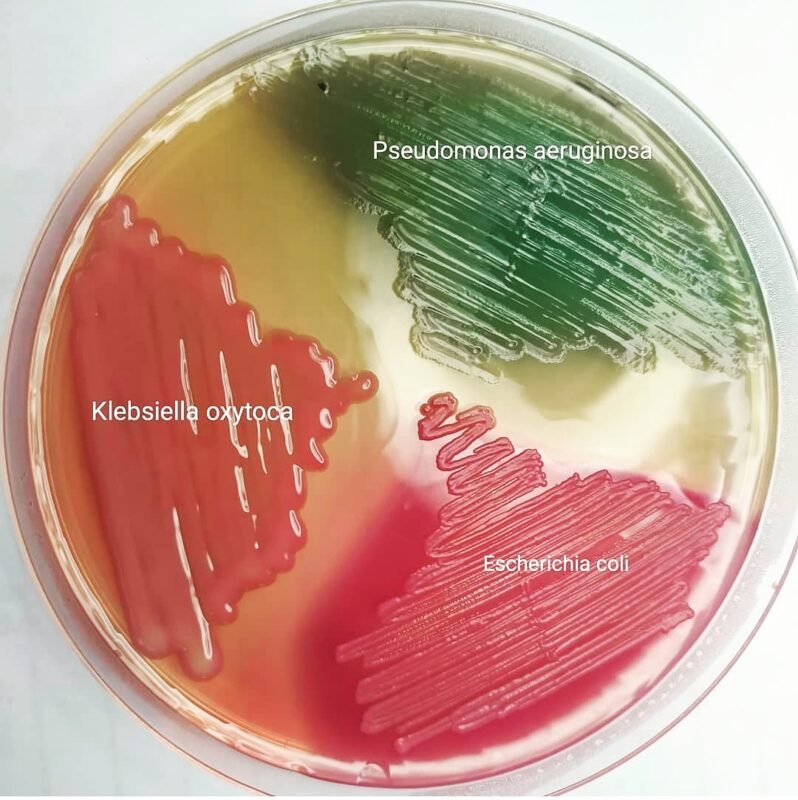MacConkey Agar is an essential medium used in microbiology labs to isolate and differentiate Gram-negative bacteria, particularly Enterobacteriaceae. Its importance spans clinical diagnostics, research, and food safety testing.
Table of Contents
Composition of MacConkey Agar
MacConkey Agar’s main components include:
- Lactose: Acts as a fermentable carbohydrate.
- Bile salts: Inhibits gram-positive organisms.
- Neutral red: pH indicator to detect fermentation
- Crystal violet: Inhibits gram-positive bacteria.
- Agar: Provides the solid medium.
Each component is critical for selective and differential microbial growth.
Principle of MacConkey Agar
MacConkey Agar functions by differentiating bacteria based on their ability to ferment lactose. Lactose fermenters, like Escherichia coli, produce acid, lowering the pH and turning colonies red or pink. Non-fermenters like Salmonella remain colourless or take on a yellow hue.
Preparation Process
Materials:
- Commercial MacConkey Agar powder
- Distilled water
Procedure:
- Dissolve the agar powder in water.
- Sterilize the mixture using an autoclave.
- Pour into sterile petri dishes and allow to cool.
Bacterial Colony Morphology
MacConkey Agar visually separates lactose fermenters from non-fermenters.
- Lactose Fermenters (e.g., E. coli): Pink to red colonies.
- Non-lactose Fermenters (e.g., Salmonella): Colorless or transparent colonies.
Applications and Uses
- Clinical: Diagnosis of enteric pathogens like Shigella and Salmonella.
- Food and Water Safety: Testing for contamination.
- Antibiotic Resistance Studies: Identifying resistant strains.
Limitations and Considerations
Certain bacteria, like Proteus, may swarm and obscure other colonies. Additionally, environmental factors like CO₂ concentration can influence colony appearance.
Troubleshooting and Interpretation of Results
- Color Changes: A lack of clear color differentiation may require further subculturing.
- Colony Appearance: Ensure the correct incubation time and temperature to get accurate results.
Advanced Applications
- Modified MacConkey Agar: Sorbitol MacConkey Agar can isolate E. coli O157, a non-lactose fermenter.
- Antimicrobial Resistance Research: Tracking resistant strains in clinical isolates.
Conclusion
MacConkey Agar remains vital in microbiology for its selective and differential properties. Its practical applications, from clinical diagnostics to research, highlight its importance in modern microbiology.
Sources
MacConkey Agar- Composition, Principle, Preparation, Results, Uses (microbenotes.com)
MacConkey Agar Differential microbial culture media (sigmaaldrich.com)

